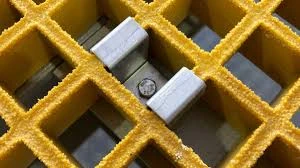
-
 Afrikaans
Afrikaans -
 Albanian
Albanian -
 Amharic
Amharic -
 Arabic
Arabic -
 Armenian
Armenian -
 Azerbaijani
Azerbaijani -
 Basque
Basque -
 Belarusian
Belarusian -
 Bengali
Bengali -
 Bosnian
Bosnian -
 Bulgarian
Bulgarian -
 Catalan
Catalan -
 Cebuano
Cebuano -
 China
China -
 China (Taiwan)
China (Taiwan) -
 Corsican
Corsican -
 Croatian
Croatian -
 Czech
Czech -
 Danish
Danish -
 Dutch
Dutch -
 English
English -
 Esperanto
Esperanto -
 Estonian
Estonian -
 Finnish
Finnish -
 French
French -
 Frisian
Frisian -
 Galician
Galician -
 Georgian
Georgian -
 German
German -
 Greek
Greek -
 Gujarati
Gujarati -
 Haitian Creole
Haitian Creole -
 hausa
hausa -
 hawaiian
hawaiian -
 Hebrew
Hebrew -
 Hindi
Hindi -
 Miao
Miao -
 Hungarian
Hungarian -
 Icelandic
Icelandic -
 igbo
igbo -
 Indonesian
Indonesian -
 irish
irish -
 Italian
Italian -
 Japanese
Japanese -
 Javanese
Javanese -
 Kannada
Kannada -
 kazakh
kazakh -
 Khmer
Khmer -
 Rwandese
Rwandese -
 Korean
Korean -
 Kurdish
Kurdish -
 Kyrgyz
Kyrgyz -
 Lao
Lao -
 Latin
Latin -
 Latvian
Latvian -
 Lithuanian
Lithuanian -
 Luxembourgish
Luxembourgish -
 Macedonian
Macedonian -
 Malgashi
Malgashi -
 Malay
Malay -
 Malayalam
Malayalam -
 Maltese
Maltese -
 Maori
Maori -
 Marathi
Marathi -
 Mongolian
Mongolian -
 Myanmar
Myanmar -
 Nepali
Nepali -
 Norwegian
Norwegian -
 Norwegian
Norwegian -
 Occitan
Occitan -
 Pashto
Pashto -
 Persian
Persian -
 Polish
Polish -
 Portuguese
Portuguese -
 Punjabi
Punjabi -
 Romanian
Romanian -
 Russian
Russian -
 Samoan
Samoan -
 Scottish Gaelic
Scottish Gaelic -
 Serbian
Serbian -
 Sesotho
Sesotho -
 Shona
Shona -
 Sindhi
Sindhi -
 Sinhala
Sinhala -
 Slovak
Slovak -
 Slovenian
Slovenian -
 Somali
Somali -
 Spanish
Spanish -
 Sundanese
Sundanese -
 Swahili
Swahili -
 Swedish
Swedish -
 Tagalog
Tagalog -
 Tajik
Tajik -
 Tamil
Tamil -
 Tatar
Tatar -
 Telugu
Telugu -
 Thai
Thai -
 Turkish
Turkish -
 Turkmen
Turkmen -
 Ukrainian
Ukrainian -
 Urdu
Urdu -
 Uighur
Uighur -
 Uzbek
Uzbek -
 Vietnamese
Vietnamese -
 Welsh
Welsh -
 Bantu
Bantu -
 Yiddish
Yiddish -
 Yoruba
Yoruba -
 Zulu
Zulu
Optimizing Performance with GRP Dual Lamination Technology for Versatile Applications
Understanding GRP Dual Lamination Products
Glass Reinforced Plastic (GRP) dual lamination products have emerged as a pivotal innovation in various sectors, propelling advancements in materials science and engineering. This technology amalgamates the benefits of fiberglass and plastic, creating a composite material that is both lightweight and robust. The dual lamination process enhances the performance characteristics of the material, making it an ideal choice for industries that demand durable and versatile solutions.
What is GRP?
Before delving into dual lamination, it is essential to understand what GRP is. Glass Reinforced Plastic, also known as fiberglass, is a composite material made from a polymer matrix reinforced with glass fibers. The combination yields a material that possesses superior tensile strength while being resistant to corrosion and weathering. GRP is lightweight, non-conductive, and can be molded into complex shapes, making it incredibly versatile for applications ranging from automotive parts to marine components and construction materials.
The Concept of Dual Lamination
The dual lamination process involves layering two distinct materials to achieve enhanced performance attributes. Typically, this involves the application of a top layer of GRP over a substrate, often made of materials like metal or polymer. The underlying substrate provides structural support, while the GRP layer offers exceptional resistance properties. This combination allows for a product that exhibits increased durability, improved thermal insulation, and enhanced aesthetic appeal.
Advantages of GRP Dual Lamination Products
1. Durability One of the primary benefits of GRP dual lamination is its resistance to mechanical stresses, weather exposure, and chemical attacks. The lamination process seals the substrate, protecting it from environmental factors that may lead to degradation over time.
grp dual lamination product

2. Weight Reduction GRP is significantly lighter than many traditional materials, such as metals. When dual laminated, the resulting product maintains a lower weight while ensuring high structural integrity, which is crucial for applications in transportation and aerospace.
3. Design Flexibility GRP can be manufactured in various colors and textures, providing designers with the freedom to customize products to meet specific aesthetic and functional requirements. The lamination process further enhances this capability by allowing for complex shapes and designs.
4. Cost-Effectiveness While the initial investment in developing GRP dual lamination products may be higher, the long-term savings due to reduced maintenance costs and longer product lifespans make it a financially viable choice for many businesses.
5. Sustainability GRP is a recyclable material. When the lifecycle of a product made from dual laminated GRP comes to an end, it can be reprocessed into new products. This aspect aligns with the increasing focus on sustainability within manufacturing and construction industries.
Applications in Various Industries
GRP dual lamination products are employed in numerous sectors, including construction, automotive, aerospace, and marine industries. For instance, in construction, they are used for wall panels, roofing systems, and window frames due to their strength and insulating properties. In the automotive sector, dual laminated GRP components contribute to lightweight designs, improving fuel efficiency and overall vehicle performance. The marine industry benefits from the corrosion resistance of these materials, allowing for longer lifespans of boats and vessels.
Conclusion
As technology continues to progress, the applications for GRP dual lamination products are bound to expand. Their unique combination of durability, weight reduction, design flexibility, cost-effectiveness, and sustainability aligns perfectly with the needs of modern industries. By investing in GRP dual lamination technologies, businesses can ensure they remain competitive in a rapidly evolving market while fostering innovation and sustainability. Understanding the intricacies and advantages of these products is crucial for engineers and manufacturers looking to incorporate advanced material solutions into their projects.









